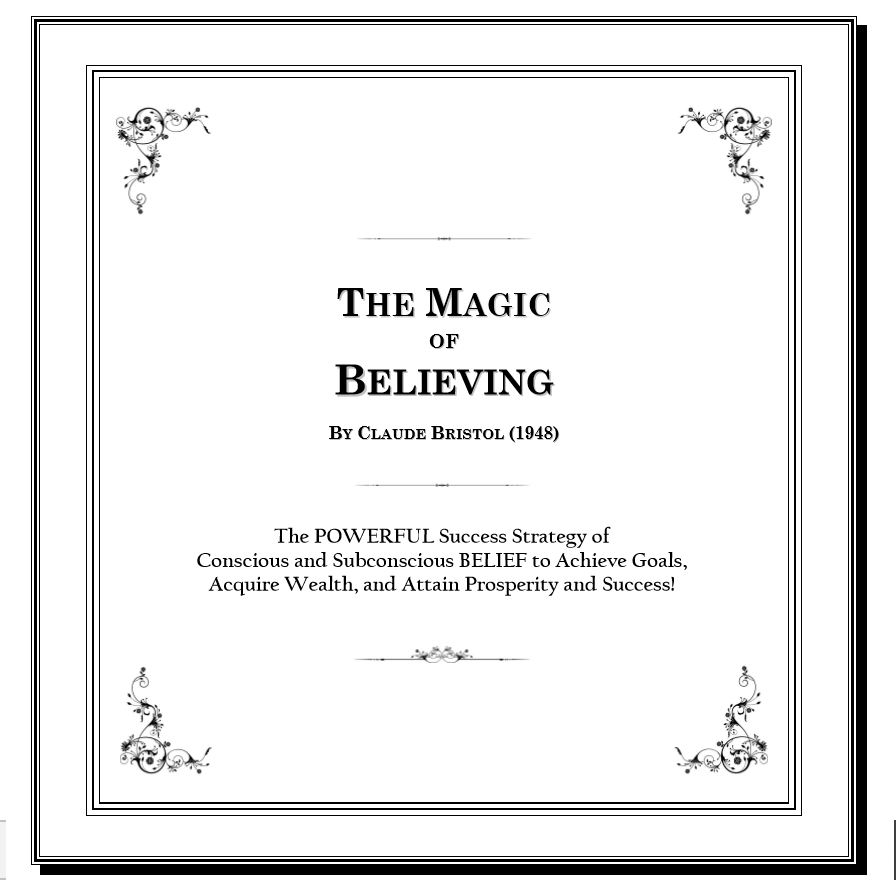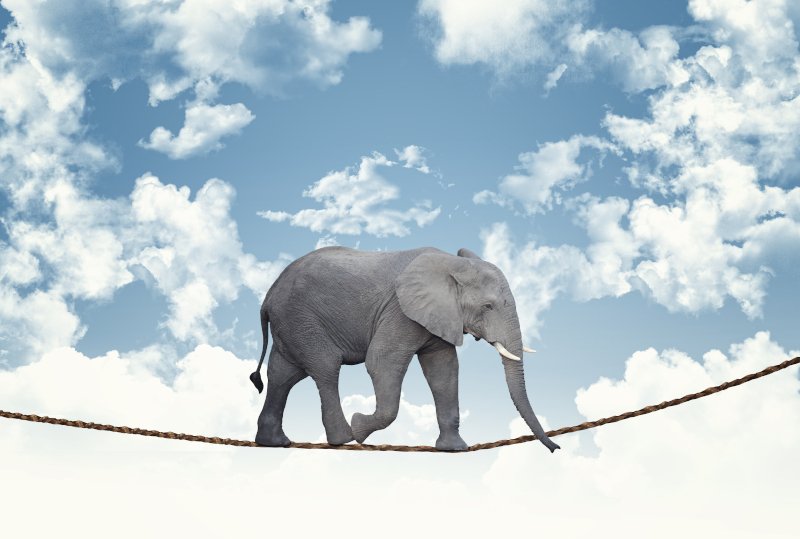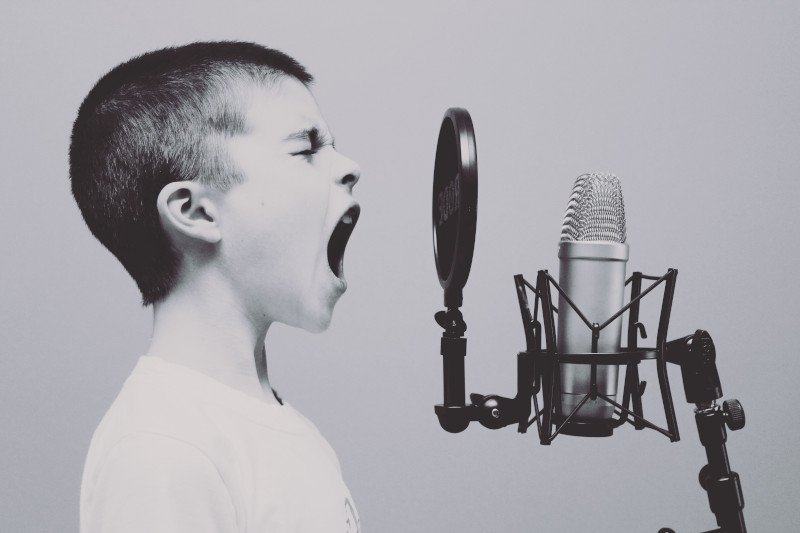It is hard to overstate the role of belief in a great many personal development and self-help systems.
For example, David J. Schwartz writes in one of the genre’s biggest classics, The Magic of Thinking Big ‘Believe it can be done. When you believe something can be done, really believe, your mind will find the ways to do it. Believing paves the way to a solution.’
Let’s define what a belief is: According to the Oxford Dictionary, a belief is ‘an acceptance that something exists or is true, especially one without proof.
When reading this definition, one wonders why we believe anything and don’t just go with what we can know for sure.
And whoops, we sit in a big puddle of a philosophical mess because how can we know what is certain in the first place.
The Role of Belief is Central to the Human Condition
Lets’s get out of that puddle and say that the role of belief touches the very core of human nature.
Two central branches of philosophy, namely ontology and epistemology unavoidably, have to make the role of belief one of their topics.
Ontology put as simply as possible, is the study of existence and aims to understand what there is in the world. Epistemology then looks at how we can know about what exists. It is a theory of knowledge that investigates what distinguishes justified belief from opinion.
We are not going down this philosophical road today and are content with knowing that the philosophy of belief is an open debate. One feels inclined to say that it is most likely due to the role of belief in the human condition.
Further, one feels inclined to note that humanity has accumulated vast amounts of knowledge about the physical environment. Modern science has enabled the information revolution, and the prospects of space travel have become very real. Meantime, the immanent Artificial Intelligence (AI) revolution challenges the very notion of what it means to be human in the first place.
Yet, at the same time, we seem to know very little about our consciousness. As if we were operating out of a blind spot.
Our Brains Can’t Access Reality Directly
Neuroscientists say that we experience the world as a ‘mental model.’ We reconstruct reality inside our heads, and that is how we experience the outside world.
‘Consider that whole beautiful world around you, with all its colors and sounds and smells and textures,’ writes the neuroscientist David Eagleman, ‘Your brain is not directly experiencing any of that. Instead, your brain is locked in a vault of silence and darkness inside your skull.’
The German system theorist Niklas Luhman stated that ‘reality is what one does not perceive when one perceives it.’ So the system of our ‘mental model’ always interacts with the outer reality through a system border, or filter, behind which we create our reality. In Luhmann’s view, this ‘self-system’ is referenced unto itself as it has no way of genuinely interacting with outside reality.

Errr, So What is It then that Our Brains Do?
We are here dealing with the brain function concerning our perception of reality, which directly relates to what we can know and believe.
The sense of reality reflects our brain’s interpretation of information from the outside world in the form of sensory data. The mind creates a model based on this external input. This mental model isn’t objective. Our mental model depends on our genes, life history, and current circumstances. It is our reality that is separate from everybody else.
Neural activity in the brain occurs when there is a change in the environment. Otherwise, the mind is relatively calm. So the brain enables us to react to external stimuli. This is necessary to survive and stay in control of daily life. Control is what allows us to get what we want. Any change sets us into motion.
And how do we know the right response? We respond within our interpretation of reality, our mental model. This implies that we need to make sense of the world around us.
Our Brains Create Stories, And That’s Probably a Good Thing
The renowned psychology professor Jonathan Haidt says that ‘the human mind is a story processor, not a logic processor.’ We are creating a narrative of our life based on all the sensory input, which we interpret as cause and effect. Causes and results are not based on logic but on the interpretations that need to make sense to us. We crave that all that happens happens for a reason. Our brains can’t stand that things are random. And things happen with us as the protagonist at center stage.
Health psychologist Shelley Taylor of the University of California maintains that a healthy mind tells itself flattering lies. Otherwise, the harsh realities of life would be hard to bear, so positive illusions go a long way. A meaningless life that ends in a painful death for eventually everybody on the planet before the earth itself evaporates in the heat death of the universe is a rather bleak prospect.
So why not construct and believe in a story that makes our existence more pleasant?
The Role of Belief or Starting With the Mind
The oversimplified version of the believe-it-and-it-will-happen stance in the self-development literature is that you think about what you are trying to achieve. This thought is your idea, and it should have a goal attached to it. Then you really (really, really) have to believe in your ability to realize what you are trying to achieve, take action accordingly, and enjoy the results.
Motivational speaker and bestselling author Brian Tracy calls this effect of a firm conviction ‘The Law of Belief’ in his ‘Great Little Book On Universal Laws of Success’: ‘Whatever you believe, with feeling, becomes your reality. You do not believe what you see; you see what you have already chosen to believe. You must identify, then remove the self-limiting beliefs that hold you back’.
It’s a kind of magic as the early classic of this once called New Thought Philosophy by Claude M. Bristol, first published in 1948, clearly states – ‘The Magic of Believing: The Classic Guide to the Miracle Power of Your Mind.’

Before Bristol’s ‘The Magic of Belief,’ James Allen with ‘As a Man Thinketh’ in 1903 and Napoleon Hill with ‘Think and Grow Richi’ wrote two more self-help classics that highlight the vital role of inner mental powers to create.
The philosopher William James spoke of the ‘Mind cure movement’ as Bristol, Allen, and Hill emphasize the origin of ones’ change to be the mind.
James also stated that ‘Belief creates its verification in fact,’ which is, of course, the gist of the matter.
What happens if you think of something, believe in it, and fail?
‘You have to let it all go, Neo. Fear, doubt, disbelief. Free your mind,’ says Morpheus to Neo in 1999 blockbuster The Matrix.
Neo doesn’t quite fully believe yet, so he fails the first time. We know in The Matrix that Neo could potentially fly as he is in a computer-generated simulation that lends itself to such kinds of mental acts.
But can you fly in the real world? How can you tell what you can realistically achieve?
The Role of Belief as Positive Self-Affirmation
‘The starting point of all achievement is desire,’ says Napoleon Hill. And it is the strength of that desire that determines how likely you are going to succeed.
In the previously mentioned ‘The Magic of Thinking Big’ first published in 1959, David J. Schwartz elaborates how an unflinching positive self-belief will tilt your environment in your favor as others come to believe in your success. Through your displayed confidence and consistently positive attitude, you make your environment into a support system. Your display of passion for what you are striving for is a powerful persuader as long as you keep getting up after failures on the way and display an attitude of absolute conviction.
Be Kind and Forgiving with Yourself
An important trick to boost positive self-belief is to practice self-compassion. In a 2003 paper titled Self-Compassion: An Alternative Conceptualization of a Healthy Attitude Toward Oneself, Kristin Neff developed the thought which mystics have known all the way: A forgiving attitude towards oneself boosts emotional regulation and avoids beating oneself down in the face of failure and adversity.
In his inspiring work ‘Endure – Mind, Body, And The Curiously Elastic Limits Of Human Performance,’ Alex Hutchison has shown how self-compassion, along with mindfulness and concentration, can enhance athletic performance.
Concentration is the age-old insight that what we think about gets bigger. The Buddha said, ‘We are what we think. All that we are arises with our thoughts. With our thoughts, we make the world’.
Attract Good Things into Your Life by Modulating your Subconsciousness
The 2006 film The Secret by Rhonda Byrne emphasized thinking about what each person wants to obtain and to infuse the thought with much emotion as possible. This has become widely popularized as the ‘Law of Attraction.’ The term ‘Law of Attraction’ is credited to the Russian occultist Helena Blavatsky, who used it alluding to an attractive power existing between spirit elements.
Equally important as a positive attitude in the face of difficulties is the role of the subconscious for the Law of Attraction. If you believe in your goals but have a subconscious, limiting belief, attracting goodies into your life can never work. Many people, for example, subconsciously think they’re not worthy of winning big in life. Likewise, it is common for many people to find it unconsciously reasonable that your partner degrades you, possibly reflecting early childhood upbringing.
Positively influencing the subconscious thoughts is also a central concern in Bruce Lipton’s ‘Biology of Belief – Unleashing the Power of Consciousness, Matter, and Miracles.’ Just like the placebo effect impressively proves the power of mind over matter, Lipton’s central assertion is not your DNA, but your mind determines your destiny.
Put Visualizations to Work for You

One powerful way to influence your subconsciousness and align all your mental faculties towards one goal is the use of visualizations. The more vivid and palpable the visualizations, the better.
Motivational speaker Mel Robbins calls visualizations mission critical for success. But how do visualizations work, and most importantly, why do they work?
Enter the reticular activating system. This is a brain system that acts as a filter system between our consciousness and outer reality. It is ourselves who have programmed this filter during our personal history. When we see our negative outlook on the world that presumably mistreats us confirmed at every step, our reticular activating system causes this confirmation bias.
While this apparent distortion of reality does not seem to make sense, the reticular activating system does have an important role: To take all sensory stimuli around us would quite simply ask too much of our brains. So there is a filter to protect the grey matter.
The way to reprogram the brain’s filter system is visualization. Visualization is a technique to align your beliefs with the goals you set out to achieve. Train your mind to have a different filter that works for you.
Close your eyes and have a specific picture of the desired outcome. Engage all your senses. Make it as real as possible. How does the new house smell? What is its color? Are there flowers at the entrance? What kind of flowers? What’s the sound the front door makes when you enter? You get the drift.
And then feel the positive emotions you have when enjoying the desired goal. Feel what it is like when you have already changed your life.
Do this every day. Best do this first in the morning, shortly after waking up, and in the evening before you go to sleep. And do it whenever you feel like it.
The more visualization you practice, the higher your confidence will be. You will enter a positive feedback loop as not only your confidence increases, but as visualization develops the skill.
Yes, you read that right, visualization develops a skill. In a fascinating study, Erin Shackell and Lionel Standing demonstrated the remarkable effects of visualization by showing that participants in an experiment increased their muscle strength almost as much as the group of participants who engaged in physical exercise to strengthen their muscles.
Why does visualization work? Because your brain does not know the difference between the things that happened and that you imagine. Brain scans show that when you read an engaging book, you live the story. It feels real to the brain. Hence the power of visualization is that encoding positive memories into your mind ‘tricks’ you into behaving as if something you desire has already happened.
Some Concerns about the Role of Belief
Research supports that there is truth to William Arthur Ward’s famous saying, ‘If you can imagine it, you can achieve it.’
While we can revel in the awesomeness of the power of visualization, we have real lives to live, which at times send us feedback that arouses our doubts. And what if our imagination gets out of hand and completely loses touch with our current reality?
Let’s voice some healthy skepticism, which is always a good practice, especially when dealing with belief.
When Self-Belief is Irrationally Biased and Becomes Pathological Grandiosity
A first valid doubt is the overstretching of one’s ambitions, which may not lead to success but an obvious disaster. Countless explorers and athletes have died pursuing their passions (which might be why the t-shirt with the slogan ‘die trying’ exists). Numerous entrepreneurs ruined themselves financially, relentlessly going after their dream idea. One may argue that perishing in the quest of ones’ believes and ideals is like heroic salvation. But while success and happiness might have many different definitions, being alive and financially okay should undoubtedly be part of that.
A potential trap due to believing too firmly and clinging to a goal despite adverse results for too long is the conviction bias. If you believe in an idea very strongly, you take its validity for granted. Deep in our hearts, we might entertain some doubts about the concept, but instead of rationally scrutinizing it, we choose to convince others and ourselves even more fervently. For an idea that is conveyed with pathos, can it be possibly wrong? Entrepreneurs who identify with their business idea too much are prone to fall for the conviction bias and hold on to a crazy business idea for too long.
When the ego becomes overly inflated after some initial success, possibly enabled by the conviction bias, grandiosity might take hold of one. Robert Moore, author of ‘Facing the Dragon – Confronting Personal and Spiritual Grandiosity’ writes ‘Very simply, ‘grandiosity’ means you have larger fantasies and wishes for yourself than your real-life experience can support, so they either make you manic, running around trying to keep up with their demands, or they make you depressed because your desires are so high and unachievable that it soon seems useless to try to do anything at all.’
Grandiosity is belief gone wrong. A proper analysis of the reasons for success and coming to know our limits can prevent us from falling into a trap that unavoidably eventually will lead to disaster.
Matter Also Has Power Over Mind
A second valid doubt about the role of belief is that matter also has power over the mind. The adage ‘fake it until you make’ summarizes this position nicely. By successfully pretending, the brain then makes it so.
Laughter yoga rests on the very premise of matter over mind. You laugh at each other, and by faking it until you make it, happiness becomes real. The physical activity of laughing triggers hormonal chain reactions that make you content and eventually genuinely smiling.
The witty Richard Wiseman has written a whole book applying this principle: ‘The As If Principle – The Radically New Approach to Changing Your Life.’ Wiseman argues, and he offers scientific studies to support his points, that you can improve your mental or emotional health through the way you act. According to Wiseman, the ‘as if principle’ is a powerful persuader. The reason you smile is not that you are happy. You are so glad because you smile. If you want to incite passion, act as if you are in love. And if you are saying something to yourself, you may believe what you’re saying.
The Various Elements of the Role of Belief and How to Make it Work for You
As we have seen so far, we can use belief to create a positive reality for us. And we can use the physical workings of our body to outsmart our minds. And belief can also lead us down the wrong path and create mayhem.
You will have noticed that we haven’t addressed any religious beliefs yet, on purpose. Religious beliefs are cultural narratives to give answers to life’s ultimate questions and to reconcile us with the fact of our mortality. Religions directly respond to human needs for meaning and certainty. Religious beliefs have been criticized for their devastating roles throughout human history (‘more people died in the name of God than for any other reason’) and their apparent lack of factuality. Among others, Richard Dawkins has been prolific in criticizing and oppose the fairy tale nature of religion with ‘the magic of reality.’
Negating proven scientific facts is not a wise course of action. And so is forcefully imposing religious believes on other people.
But who are we to judge as long as people don’t bother us with their beliefs? And this is the ultimate lesson of beliefs: Our belief is your final private property, and we all have to find our sweet spot of conviction that works best.
Luckily there are some universal tools available that can support us:

Have Self-compassion with Your Unique Self
Be kind to yourself. People like to talk about forgiving others, but how about forgiving ourselves? Self-compassion is a handy tool for self-empowerment. It encourages us not to beat up our own identity over an apparent mistake but to view oneself as a representative of the human species with natural flaws. This way, it is easier to see abstract human behavior rather than a personal failure.
Oscar Wild cynically noted that ‘most people are other people. Their thoughts are someone else’s opinions, their lives a mimicry, their passions a quotation.’ We are all unique. We are so unique in our genetic make-up, formed by our personal history and living environment, that it is safe to say that no other individual like us will ever exist again. As such, our needs and potential to be a shining example of the human condition are unique.
Hence it is our mission to make choices towards our best possible version of us. Our beliefs are an essential heuristic of how we see the external world and how we feel about our inner conviction and motivation. A necessary prerequisite is that we can choose who we are in this world. And are not somebody else as criticized by Wilde. Believe that you can make a free choice.

Implement Empowering Beliefs and Remove Limiting Ones
When it comes to choice and action, there are empowering and limiting beliefs. It is important to note that believes can work in both directions: They can empower us as visualizations do. They are the magic of manifesting creativity that gives fulfilling meaning to life. We are the placebo of our beliefs. Those of us who feel in control of our lives and have our own and individual goals we make progress towards are generally happier than people who do not.
As for limiting beliefs about ourselves and the world, we need to modulate them. The essence of negative believes is that we ought not to stay in your way. Meanwhile, self-manipulations remains rampant.
The role of belief is both the greatest gift and the greatest obstacle. From a neurological point of view, we are our beliefs. This explains extreme reactions by people when they feel their ideals are threatened.
A right belief is one that works for us without impeding others in their freedom. How do we know something works for us? Expose yourself to objective measures. Journalling is an important start.
Be Ruthless in the External Validation of Your Inner Beliefs
Today we have numerous ways of measuring almost anything in our lives or write it down in your journal. Ask yourself five times a day at set times; how do I feel right now on a scale from 1 to 10 and keep track. Keeping a journal will help you to see movements over time and not to be tricked in the heat of the moment.
While it is true that we all have our reality, this does not mean that there is no external, objective reality. We must have a feedback loop from this outside reality into our own lives. This feedback loop relies on external data. We need to see positive signs in our lives that our beliefs are working for us; otherwise, nothing can protect us from delusions.
As the positive feedback loop becomes stronger through our actions’ positive signs, our beliefs become more grounded. They have their physical representation in the neural pathways in our brains. This way, the role of belief becomes real magic.





